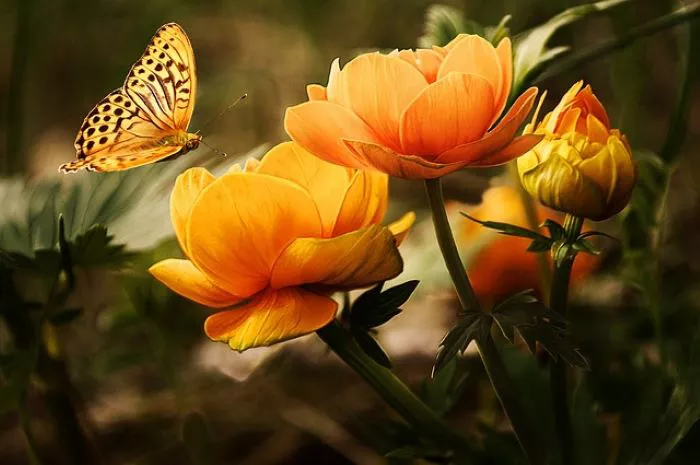Flowers are one of nature’s most beautiful creations. They play a crucial role in the reproduction of plants and contribute significantly to the ecosystem. Understanding how flowers bloom is essential for gardeners, botanists, and nature enthusiasts alike. This article provides a detailed exploration of the blooming process, the factors that influence it, and the significance of flowering plants in nature.
The Process of Flowering
The process of flowering, known as flowering or anthesis, involves several stages. It begins with the development of flower buds, which are immature flowers. These buds form on the plant in response to various internal and external signals. The transition from bud to bloom is a complex process that involves growth, differentiation, and maturation.
The first stage of flowering is called bud formation. During this stage, the plant produces flower buds in response to specific environmental cues. These cues can include changes in temperature, light, and water availability. For many plants, the arrival of spring triggers the formation of buds as the days become longer and warmer.
Once the buds have formed, the next stage is differentiation. During differentiation, the cells within the bud begin to develop into specific flower structures. This process is influenced by hormones, particularly gibberellins and auxins. These hormones help regulate the growth and development of the flower parts, including petals, sepals, stamens, and carpels.
The final stage is maturation and blooming. As the flower bud matures, it begins to open, revealing the petals and reproductive structures. This process can take anywhere from a few hours to several days, depending on the species and environmental conditions. Once the flower opens, it is ready for pollination.
Factors Influencing Flowering
Several factors influence the blooming process in flowers. These factors can be categorized into environmental, genetic, and physiological influences.
Environmental Factors: Light is one of the most critical environmental factors for flowering. Many plants require specific light conditions to trigger blooming. For example, long-day plants bloom when the days are longer, while short-day plants flower when the days are shorter. Temperature also plays a significant role. Some plants require a period of cold dormancy, known as vernalization, before they can bloom.
Water availability is another essential factor. Adequate moisture is necessary for the plant to support the energy demands of blooming. Drought conditions can delay or prevent flowering altogether.
Genetic Factors: The genetic makeup of a plant determines its flowering time and characteristics. Different species have evolved various mechanisms for flowering. Some plants may have a fixed flowering schedule, while others may be more flexible, responding to environmental changes.
Physiological Factors: Hormones play a crucial role in the flowering process. As mentioned earlier, gibberellins and auxins are important in regulating growth and development. Ethylene, another plant hormone, is involved in the maturation and opening of flowers. The balance of these hormones can influence when and how a flower blooms.
The Importance of Flowering Plants
Flowering plants, or angiosperms, are vital to ecosystems and human life. They provide food, shelter, and habitat for countless organisms. The blooming of flowers is essential for reproduction, as it facilitates pollination and seed production.
Flowers attract pollinators such as bees, butterflies, and birds. These creatures play a crucial role in transferring pollen from one flower to another, enabling fertilization. This process leads to the formation of seeds and fruits, which are critical for plant reproduction and dispersal.
In addition to their ecological importance, flowering plants have significant cultural and economic value. They are used in landscaping, gardening, and agriculture. Many flowers are cultivated for their beauty and fragrance, while others are essential for producing fruits and vegetables.
Flowering and Seasonal Changes
Flowering is closely tied to seasonal changes. In temperate regions, many plants bloom in spring and summer when conditions are favorable. The increase in sunlight and warmer temperatures signals plants to break dormancy and begin the flowering process.
In contrast, some plants have adapted to bloom in the fall or winter. These plants often have specialized mechanisms to cope with colder temperatures and shorter days. For example, winter-blooming plants like hellebores can produce flowers even when snow is on the ground.
Tropical plants, on the other hand, may bloom year-round, depending on environmental conditions. In these regions, the absence of distinct seasons allows for continuous growth and flowering.
Conclusion
The blooming of flowers is a fascinating process that involves a series of complex stages influenced by various factors. Understanding how flowers bloom helps us appreciate their beauty and significance in nature. From the formation of buds to the opening of flowers, each step is essential for the reproduction of plants and the health of ecosystems.
Flowering plants play a crucial role in our lives, providing food, shelter, and aesthetic value. They are integral to the environment and human culture. By learning about the blooming process, we can better care for our gardens and appreciate the natural world around us. Whether in a garden or a wild landscape, flowers remind us of the beauty and complexity of life.


